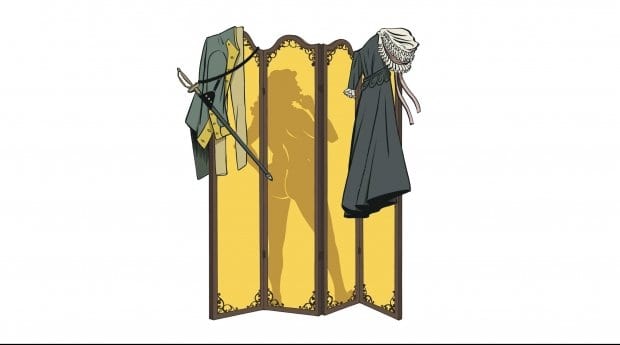While attending an art show in 2011, British art dealer Philip Mould spotted an odd painting. It was being sold as a portrait of an unknown 18th-century woman in a feathered hat, but to Mould there was more there than met the eye — there was something about that five-o’clock shadow!
After acquiring the painting and doing some research and restoration, Mould confirmed it was of “a bloke in a dress with a hat.” But more than that, it was an image of Charles-Geneviève-Louis-Auguste-André-Timothée d’Éon de Beaumont (or, simply, the Chevalier d’Éon), a French diplomat, soldier and spy who lived from 1728 to 1810. The picture now hangs in London’s National Portrait Gallery.
D’Éon once claimed that at birth his sex was uncertain, so he was named after “both male and female saints in order to avoid any error.” Probably to inherit and have the career he wanted, d’Éon lived the first half of his life as a man, wearing only men’s clothing.
He earned a law degree in Paris and wrote many hefty books. His accomplishments and connections got him sent on a diplomatic mission to Russia. He then served as an officer during the Seven Years’ War. For his achievements, he received France’s greatest decoration, the Order of St Louis.
With the rank of minister plenipotentiary (interim ambassador, essentially), in 1763 d’Éon was sent to London to negotiate peace with Britain. Without the knowledge of the French government, d’Éon was there as King Louis XV’s personal spy, his reports to be used for a possible invasion of Britain.
The king handled the arrangement clumsily. When d’Éon failed to get the position of ambassador to Britain, partly because of his wine bills, and was recalled to France, he refused to go. He seems to have blackmailed the king, the gist being that if he was forced to return, he’d publish information related to the king’s invasion plans.
D’Éon hung around London for years, providing fodder for journalists, who perpetually suggested that he was involved in intrigue. Beginning in about 1770, rumour spread that d’Éon was a woman, with Britons placing wagers as to his true sex.
Fed up, France offered d’Éon a pension on the condition that he return to France, live as a woman (I will refer to d’Éon as “she” from here onward, since it is at this time she began identifying as female), surrender any sensitive documents and retire from politics.
D’Éon returned to France, but, banned from the royal court, she grew tired of languishing at the family home in Burgundy and in 1785 returned to London. It’s unclear how the French government dealt with this; d’Éon was no longer given her pension, but that may have had more to do with the French Revolution, which was just getting underway.
To get by, she sold her many books and participated in fencing tournaments (wearing a dress the whole time, of course). At this point, she began to say that she had been born female, and after having had to live as male for many years was content to live the rest of her life as her true gender, female. Nothing is known of her sexual orientation. It was in 1792 that the aforementioned portrait was painted.
When she died, a doctor decided that, contrary to what d’Éon had claimed later in life, she was biologically male. It was quite a confusing situation, especially given that doctors had said she was biologically female years before.
Perhaps it’s none of my business (though it is valuable to uncover cases in history of non-cisgender people), but it is hard to pin down d’Éon’s gender. Was she born male or female? Was she intersex, transgender or a transvestite? I don’t think she was simply “a bloke in a dress with a hat.” In any case, given that d’Éon identified as female for the latter portion of her life, I’m happy to think of her as a gender-quite-unusual woman.
History Boys appears in every issue of Xtra.


 Why you can trust Xtra
Why you can trust Xtra


